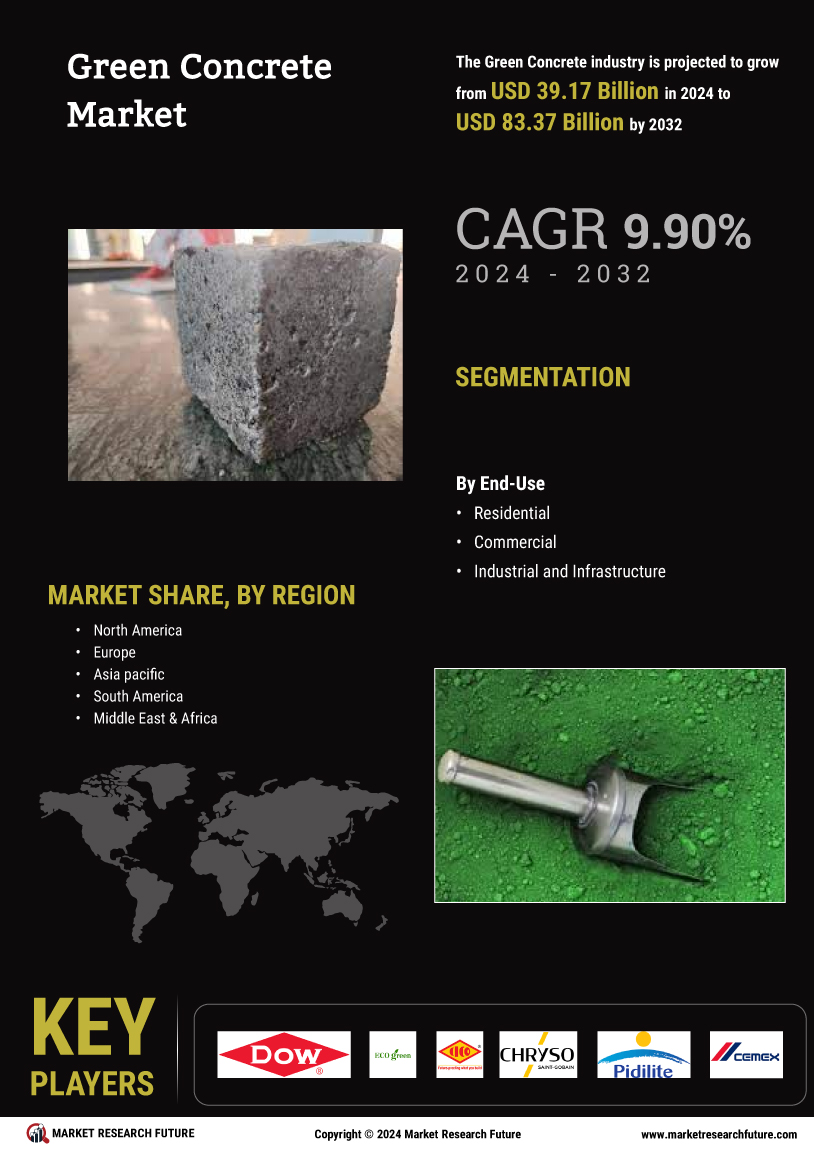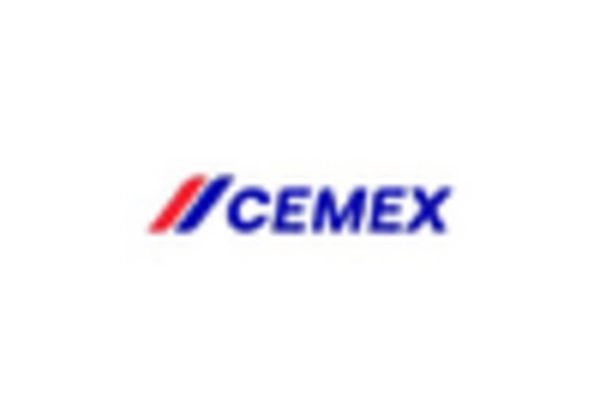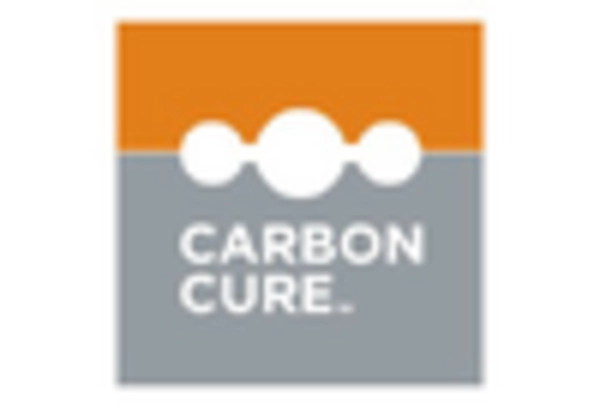Innovations in Material Science
Advancements in material science are significantly influencing the Green Concrete Market. Researchers are exploring novel additives and techniques that enhance the performance of green concrete while maintaining its eco-friendly attributes. For instance, the incorporation of industrial by-products such as fly ash and slag not only improves the strength and durability of concrete but also reduces waste. Furthermore, innovations in nanotechnology may lead to the development of concrete with superior properties, which could attract more construction firms to adopt green solutions. As these technologies mature, they are expected to drive market expansion, with projections suggesting a potential increase in market share for green concrete products.
Government Regulations and Incentives
Regulatory frameworks and incentives established by governments worldwide are playing a crucial role in shaping the Green Concrete Market. Many countries are implementing stringent regulations aimed at reducing carbon emissions and promoting sustainable building practices. These regulations often include mandates for using eco-friendly materials in public infrastructure projects. Additionally, financial incentives such as tax breaks or grants for using green materials are encouraging construction companies to adopt green concrete solutions. As these policies become more widespread, they are likely to stimulate demand for green concrete, potentially leading to a more robust market environment.
Growing Awareness of Environmental Impact
The heightened awareness of environmental issues among consumers and businesses is driving the Green Concrete Market. As society becomes more conscious of climate change and resource depletion, there is a growing expectation for industries to adopt sustainable practices. This shift in consumer behavior is influencing construction companies to prioritize eco-friendly materials, including green concrete. Market data suggests that projects utilizing sustainable materials are increasingly favored by clients, which may lead to a competitive advantage for firms that embrace green solutions. Consequently, this awareness is expected to propel the market forward, as more stakeholders seek to align with environmentally responsible practices.
Rising Demand for Sustainable Construction
The increasing emphasis on sustainability within the construction sector appears to be a primary driver for the Green Concrete Market. As environmental concerns gain traction, builders and developers are increasingly seeking materials that minimize ecological footprints. Reports indicate that the construction industry accounts for a substantial portion of global carbon emissions, prompting a shift towards greener alternatives. Green concrete, which incorporates recycled materials and reduces energy consumption, is becoming a preferred choice. This trend is likely to continue, as more stakeholders recognize the long-term benefits of sustainable practices, potentially leading to a market growth rate of over 10% annually in the coming years.
Increased Investment in Green Infrastructure
Investment in green infrastructure is emerging as a significant driver for the Green Concrete Market. Governments and private entities are recognizing the importance of sustainable urban development and are allocating funds towards projects that utilize green materials. This trend is evident in various initiatives aimed at enhancing public spaces, transportation systems, and energy-efficient buildings. The integration of green concrete in these projects not only supports sustainability goals but also contributes to improved urban resilience. As investments in green infrastructure continue to rise, the demand for green concrete is likely to follow suit, fostering a more sustainable construction landscape.


















Leave a Comment